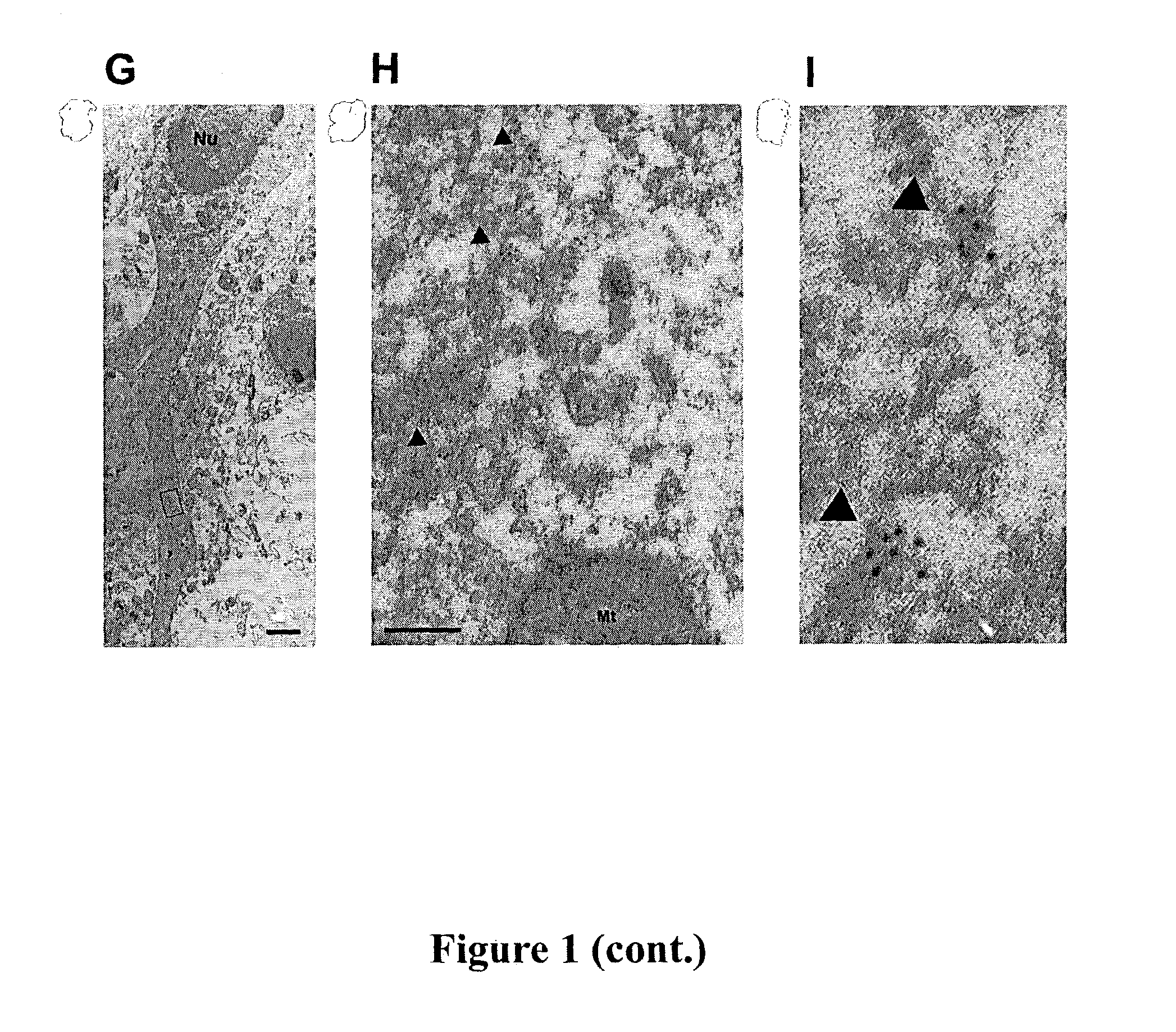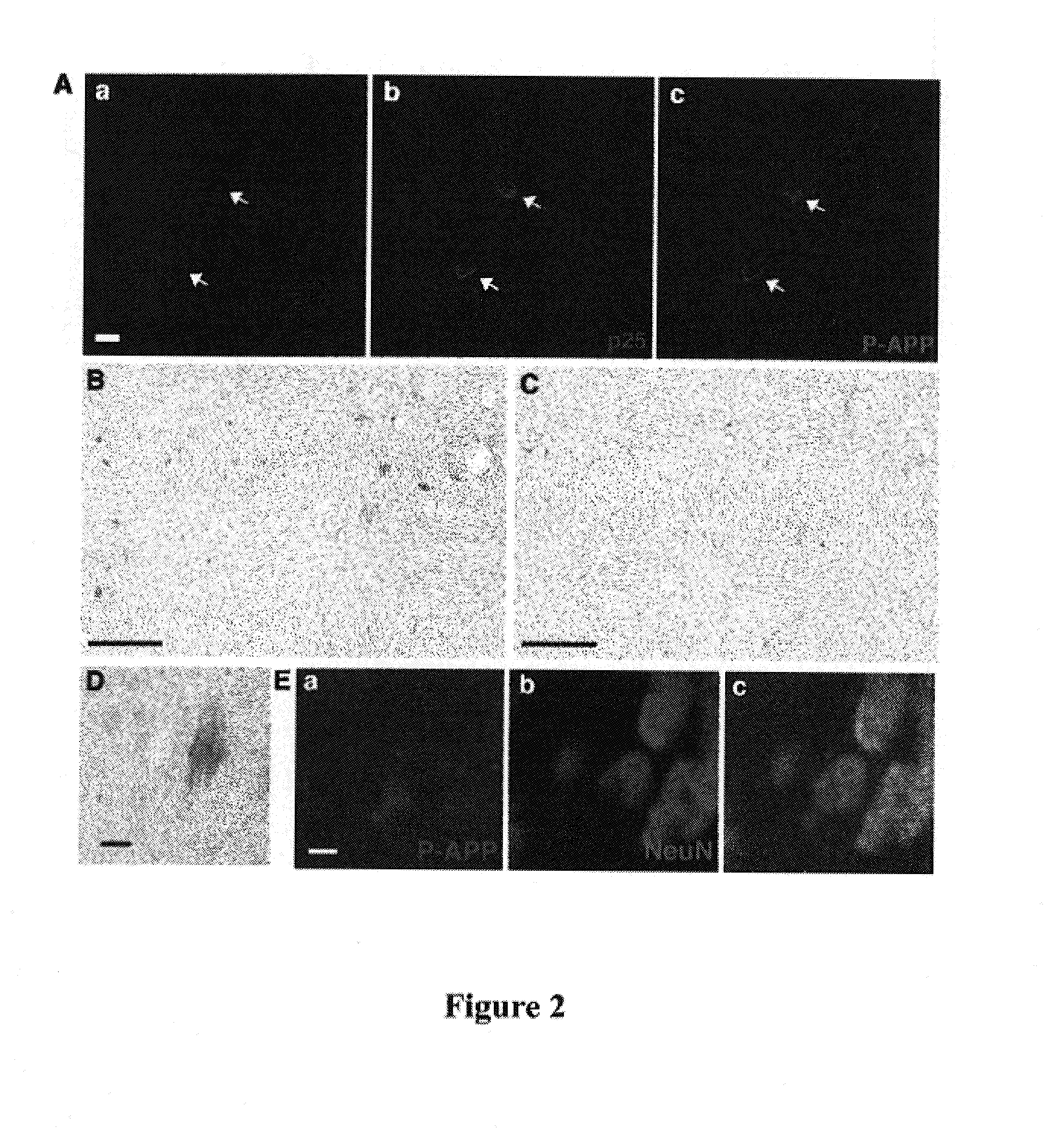Transgenic mice expressing inducible human p25
a technology of inducible human p25 and transgenic mice, which is applied in the field of neurodegenerative disorders treatment and diagnosis of individuals, can solve the problems that the mouse model expressing p25 fails to effectively represent neurodegenerative phenotypes in vivo, and achieves the effect of reducing facilitating the generation of a
- Summary
- Abstract
- Description
- Claims
- Application Information
AI Technical Summary
Benefits of technology
Problems solved by technology
Method used
Image
Examples
example 1
Characterization of Phospho-Specific Antibodies Recognizing P-T668
[0131]To study T668 phosphorylation of APP in normal and diseased brain samples, a rabbit polyclonal antibody against a phospho-T668 (P-T668) containing peptide was generated. To determine if the P-T668 antibody was specific to phosphorylated APP, a glutathione S-transferase (GST)-tagged recombinant protein containing the C-terminus of APP (APP-C) was generated and this protein was phosphorylated with recombinant p25 / Cdk5 kinase. While the APP C-terminal antibody recognized both the phosphorylated and unphosphorylated forms of APP-C, the P-T668 specific antibody only recognized the phosphorylated form (FIG. 1A). To show that this antibody only recognized APP phosphorylated on residue threonine 668, Western blot analysis was performed on lysates from neuroblastoma cells transfected with either WT APP or the threonine to alanine mutant (T668A) APP. The P-T668 antibody recognized only WT APP but not the APP T668A mutant ...
example 2
Localization of T668 Phosphorylated APP
[0140]Using the P-T668 antibody, T668 phosphorylated APP was found to localize to neuronal processes and was enriched at growth cones and tips of neurites in primary rat hippocampal culture (FIG. 1E). While partial co-localization of P-APP and APP was observed in the growth cone (FIG. 1F), a pan APP antibody primarily labeled the ER and Golgi compartments in the cell body (FIG. 1F), indicating that the T668 phosphorylated form of APP represents a subpopulation exhibiting a subcellular localization pattern distinct from that of the major pool of APP. Immunogold electron microscopy images show that in addition to nerve terminals, P-APP was present on small vesicles that are roughly 50 nm in diameter along microtubules (FIG. 1G-I), indicating that T668 phosphorylation can target APP for transport down neurites.
[0141]To determine if hyperactivation of Cdk5 affects APP phosphorylation, p25 / Cdk5 was overexpressed in primary rat cortical neurons by tr...
example 3
APP Phosphorylation and Neurotoxicity
[0144]To determine if neurotoxic conditions influence APP phosphorylation, primary hippocampal neurons were treated with ionomycin. Ionomycin, which induces conversion of p35 to p25, caused a marked elevation of T668 phosphorylation on APP. Two different Cdk-specific inhibitors, roscovitine and butyrolactone, inhibited T668 phosphorylation induced by ionomycin, indicating that APP is one of the Cdk5 targets whose phosphorylation is induced by neurotoxic conditions.
PUM
| Property | Measurement | Unit |
|---|---|---|
| diameter | aaaaa | aaaaa |
| half life | aaaaa | aaaaa |
| time | aaaaa | aaaaa |
Abstract
Description
Claims
Application Information
 Login to View More
Login to View More - R&D
- Intellectual Property
- Life Sciences
- Materials
- Tech Scout
- Unparalleled Data Quality
- Higher Quality Content
- 60% Fewer Hallucinations
Browse by: Latest US Patents, China's latest patents, Technical Efficacy Thesaurus, Application Domain, Technology Topic, Popular Technical Reports.
© 2025 PatSnap. All rights reserved.Legal|Privacy policy|Modern Slavery Act Transparency Statement|Sitemap|About US| Contact US: help@patsnap.com



